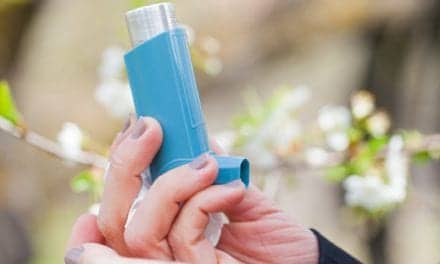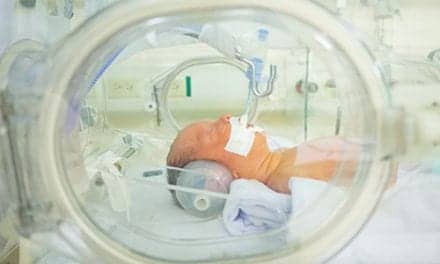Therapists at Fairview Southdale Hospital have acquired new skills and responsibilities, including cell saving and placing intra-aortic balloon pumps.
 The hospital serves the southwest area of Minneapolis/St Paul.
The hospital serves the southwest area of Minneapolis/St Paul.
At Fairview Southdale Hospital, respiratory therapists are intimately involved with the care of patients undergoing surgery; they develop policy and protocol; and they run a successful pulmonary rehabilitation program.
The 390-bed, not-for-profit hospital serves the southwest metropolitan area of Minneapolis/St Paul, the nation’s 15th largest metro area, with nearly 3 million inhabitants. About 30 respiratory therapists are employed there, most in the hospital’s pulmonary rehabilitation unit. Floor therapists service the entire hospital population, from the 16-bed special care nursery through the 30-bed oncology ward; provide oxygen services; and are members of the code blue team. They also run pulmonary function laboratorys; conduct critical care transport; and run life-support equipment.
On a typical day shift, therapists are scheduled for the intensive care unit (ICU), the operating room, and pulmonary rehab, or distributed according to patient load. Typical floor duties include patients on CPAP or bilevel positive airway pressure, nebulizer treatments, and monitoring ventilator care in the hospital’s 25-bed ICU.
Southdale therapists work 12-hour or 8-hour shifts. A typical patient load consists of 10 nebulizer treatments per floor round, or six to 10 ventilator patients in the ICU. Emergency department duties include nebulizer treatments for asthmatics and patients with chronic obstructive pulmonary disease, ventilator setup on critical patients, and airway management for conscious sedation cases.
OR Offers New Challenges
Bill LeTourneau, RT, has worked at Fairview Southdale for 4 years. What drew LeTourneau to Southdale was the variety of responsibilities, particularly OR duties, entrusted to therapists. He is one of a dozen therapists at who rotate through the OR, where he performs intra-aortic balloon pumping and cell saving, and assists in hemodynamic monitoring. Southdale’s therapists became involved in OR duties 7 years ago when they began placing intra-aortic balloon pumps. Additional OR duties grew from there, including cell saving, in which respiratory therapists collect blood from a patient undergoing surgery, wash it, and return it to the patient.
“We wanted to get more involved with the hemodynamic monitoring of bypass patients, and it made financial sense for the hospital; timewise, we were able to take that on,” LeTourneau notes.
Fairview Southdale’s therapists are also intimately involved with improving hospital policy. “I’ve written policy and procedures on critical care and respiratory management,” LeTourneau says. “The pulmonologists are very open to this type of involvement, and our manager supports our endeavors and welcomes us to get new policies and procedures implemented.”
Respect and Responsibility
On a daily basis, Southdale therapists assess patients under the care of a pulmonologist to see if they are ready to be put on a spontaneous breathing protocol. This is an area in which LeTourneau was instrumental in changing protocol and implementing new procedure. “I simplified the slow wean procedure so the flow charts are easier to read and the protocol is easier to initiate,” he says.
The hospital has 16 to 20 ventilators at any one time, six to eight bilevel positive airway pressure units, and two or three humidification units. “We look at volumes and assess whether there is an acute or long-term need,” Tami Farrell, RRT/RRCP, respiratory care manager, says of her work ensuring that equipment needs are met. “This is done on a daily basis as well as annually. We have a wide variety of respiratory care equipment.” The department recently purchased four ventilators on which optional units were installed for Southdale’s neonatal population. Therapists are responsible for educating other departments about new equipment and teaching staff how and when to use it.
Prevention vs Cure
While floor therapists no doubt are used efficiently at Southdale, therapists in rehab serve a preventive function. “Providing a pulmonary rehabilitation program brings down the overall cost to the hospital because patients are healthier—and that means fewer admissions,” says Farrell.
The three therapists assigned to pulmonary rehabilitation have no floor duties. They work exclusively in rehab, providing outpatient education for patients with respiratory disease. Patients are assessed for pulmonary function and ambulatory ability. They are taught the proper order in which to take medications, the various delivery systems, and proper administration techniques. They also meet with a pharmacist to learn how their medications work. Patients are also evaluated in terms of their psychosocial state, and when needed, spiritual counselors are called upon to intervene.
Both respiratory care and pulmonary rehabilitation at Fairview Southdale are widely respected, and its therapists are not too concerned about being undone by the competition. “We’re in a very good location,” says Farrell. “Our biggest competition is 15 minutes away.”
That competitor is also the only hospital on the west side of the Twin Cities metro area that offers pulmonary rehabilitation. Another facility, Fairview-University Medical Center, which is about 30 minutes away and a sister hospital in the Fairview system, is considering a similar program based on Southdale’s success.
Fran Howard is a contributing writer for RT.










